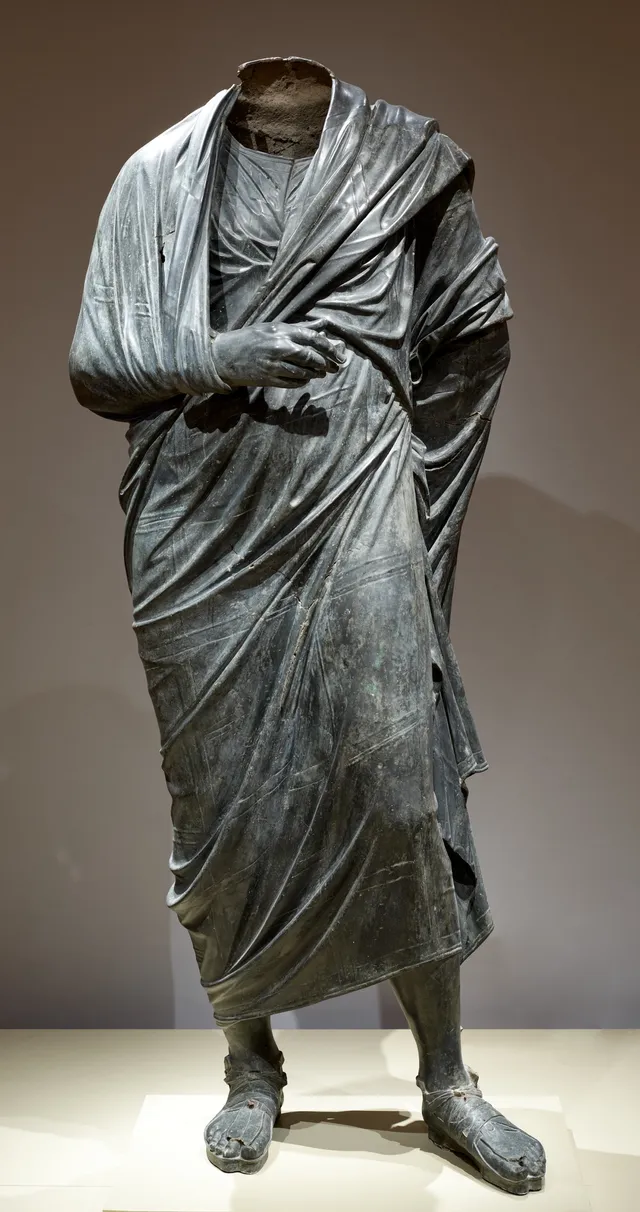
The Cleveland Museum of Art in Ohio filed a lawsuit on Thursday against Manhattan District Attorney Alvin Bragg, over the seizure of a headless sculpture valued at around $20 million.
The lawsuit was filed in a federal district court in Ohio, asserting that the museum is the rightful owner of the unnamed statue, described in the museum’s collection as “Draped Male Figure.”
The statue dates to between 150 B.C.E and 200 C.E., but the identity of its subject is disputed. It is speculated to be of the philosopher Sophocles, or one of two Roman emperors, Lucius Verus or Marcus Aurelius. It is referred to in the lawsuit as Philosopher.
“This case involves the seizure of one of the most significant works in CMA’s collection by the New York District Attorney,” lawyers for the museum wrote in the lawsuit, obtained by Artnet News. “CMA seeks a declaration that CMA is the rightful owner of the Philosopher.”
The statue has been seized in place, meaning it is still in the possession of the museum but not considered its legal property. A New York judge signed off on a warrant on August 14 when prosecutors presented evidence that it was stolen property and belonged to the nation of Turkey.
“The Manhattan District Attorney’s Office has successfully recovered more than 4,600 illegally trafficked antiquities from numerous individuals and institutions,” Douglas Cohen, a spokesperson for Bragg’s office, said by email. “We are reviewing the museum’s filing in this matter and will respond in court papers.”
However, the museum said in court documents that the statue was shown at the Museum of Fine Arts Boston in the late 1960s, its earliest known exhibition. It later appeared in exhibitions at the Indianapolis Museum of Art between 1971 and 1974, at the Minneapolis Institute of Art from 1976 to 1980, and at Rutgers University in New Jersey in 1981.
In 1986, the Cleveland Museum of Art acquired the sculpture for $1.85 million from Edward H. Merrin, Inc., an art gallery in New York. The museum provided the bill of sale as evidence in the court documents.
In the bill, the gallery asserted that it was the lawful owner of the statue and had the right to sell it. The museum kept the document and since then the statue has been on public display, leading to the publication of scholarly articles that draw “different conclusions” about its origins.
The Turkish Consul General reached out to the museum in 2009 on behalf of the country’s culture and tourism ministry, asking for the provenance documentation for 21 objects in the museum’s collection, including the Philosopher statue, according to the museum. Turkey never tried to declare itself the true owner of the statue or otherwise sought to receive it through a repatriation process.
Bragg’s investigation has relied on the argument that the statue is of Marcus Aurelius, believed to be looted from the city of Bubon in southwestern Turkey, and thus must be repatriated under Turkish law.
“The museum takes allegations of stolen art or antiquities extremely seriously, and indeed has been among those persuaded in the past by the New York District Attorney’s office to stipulate that CMA has no claim, resulting in the transfer to a foreign country of antiquities from the museum’s collection,” the lawsuit reads.
“Furthermore, the museum has in the past transferred voluntarily antiquities to foreign countries without the intervention of any state or United States authority. In this case, the evidence presented by the defendant has fallen short of persuasive proof that the Philosopher is, in fact, a piece of stolen property belonging to the Republic of Turkey.”
More Trending Stories:
Four ‘Excellently Preserved’ Ancient Roman Swords Have Been Found in the Judean Desert